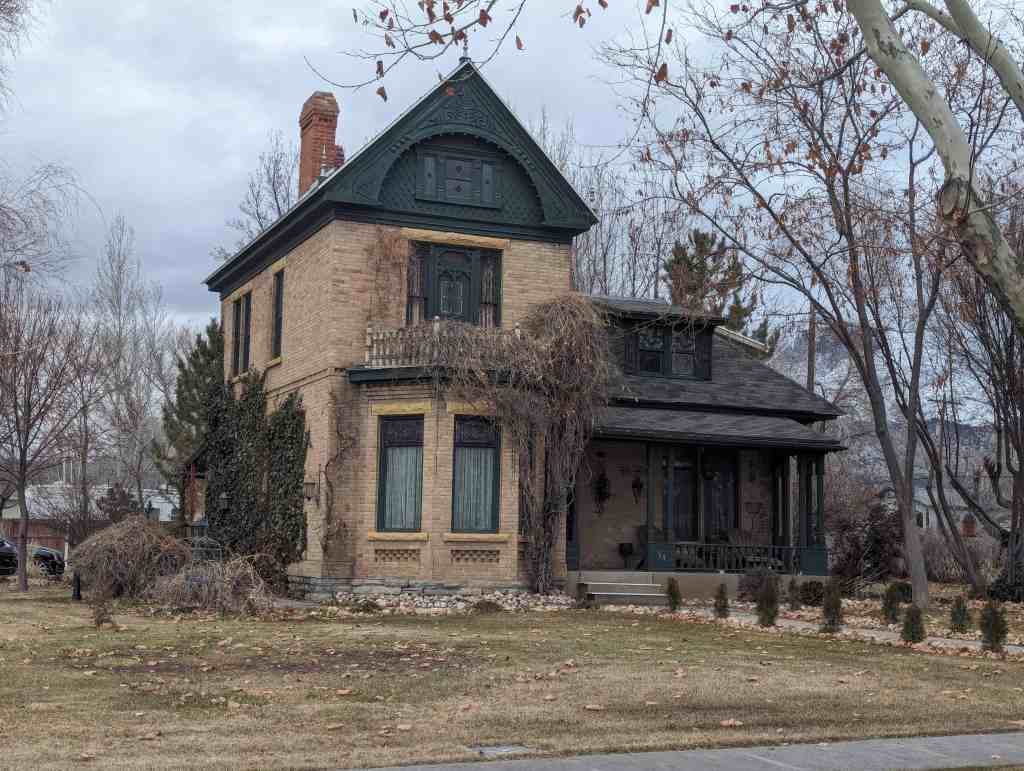Tags

Edwin Robert Booth House
The significance of the Booth House lies in the merit of the architecture. The refined Victorian elegance of this home speaks eloquently of the bourgeois values of the rural entrepreneurial class and the effort they put into making their homes reflect their distance from the less successful participants in the frontier settlement experience.
The text on this page is from the nomination form for the National Register of Historic Places (#79002497), it was added to the register December 6, 1979 and it is located at 94 West 300 South in Nephi, Utah.

Edwin Robert Booth Jr. (1857-1914) was the Nephi City Recorder when he married Anna Elizabeth Brough (1860-1931) and built this home. He had been a councilman in Nephi’s first city government (1889). In 1899 he was elected mayor of Nephi. During the years following this term of office, he served as the postmaster. Booth f s business ventures included executive involvement with the Utah Wool Growers Company and the Nephi National Bank.
Utah Wool Growers Company and the Nephi National Bank. This impressive Victorian house was built by a man influential in local politics. His wife was a member of one of the first non-Indian families in the area–her father John had been one of those (as had Edwin f s father, Edwin Sr.) who had built within the Salt Creek Fort which had been constructed, beginning in 1854, as a defense against local Indians. Her brothers built ; homes in the area James built the home directly south.
Because of Edwin’s civic and business involvements, the Booths entertained extensively. The double parlor in the home was the setting for many parties and dinners–with nieces and nephews pitching-in to help.
Edwin Booth died in 1914; the house became the property of his wife. She lived in the home until 1927, then moved to Salt Lake City to live with her only child, Athelia Pitchforth. Anna’s brother Barton and his family moved into the house. Eventually they rented out the east half of the house, adding a dormer in the attic. The house passed to Athelia upon her mother’s death in 1931. Inherited debts and the general nationwide economic depression contributed to ownership of the house being transferred to a local bank. The Barton Brough family moved out of the home in 1938. His brother William F. bought the house and used it as rental property.
Odell Taylor bought the house several years later. Upon his death, the house was torn apart by relatives looking for money which he had supposedly hidden in the house. It remained unoccupied for many years. In July of this year the Steven Andersons moved into the home and are in the process of restoring it to its former glory.





